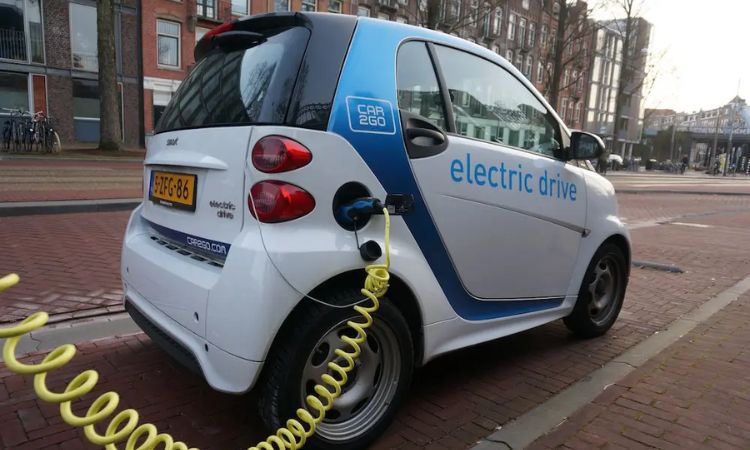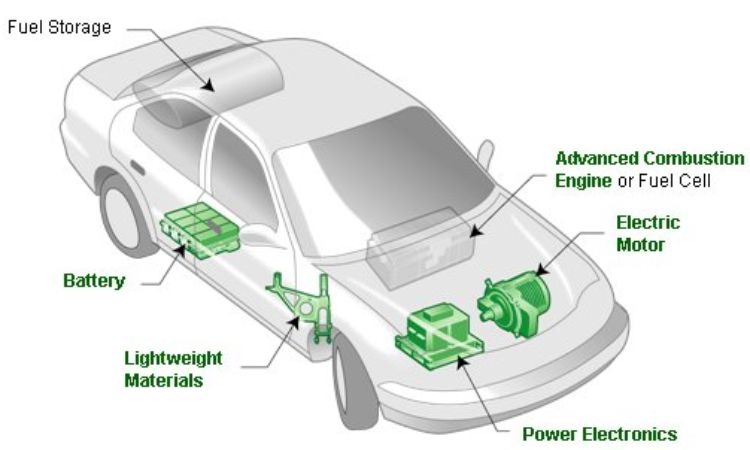The purchase of electric cars has increased over the past ten years (EV) and now, we are going o discuss the impact of electric vehicles on the environment. There are numerous benefits to switching to an EV, including the fact that they are more efficient than gas-powered vehicles, can lessen your reliance on fossil fuels, and need less upkeep than the majority of automobiles.

The fact that Electric Vehicles are frequently regarded as one of the most environmentally friendly modes of transit is one factor in why many people choose to purchase an electric vehicle. Unlike hybrid or gas-powered automobiles, EVs are electric-only vehicles. Depending on how the electricity is generated, your EV may be powered entirely by sustainable or renewable resources.
When assessing the effects, there are four things to take into account: When assessing how electric vehicles affect the environment, it’s important to take into account their tailpipe emissions, well-to-wheel emissions, the energy source used to recharge their batteries, and their efficiency. Emissions from electric vehicles’ tailpipes and wheels. There are no tailpipe emissions, also referred to as direct emissions, when an electric car is powered by electricity. Compared to today’s gasoline-powered cars, EVs are significantly more environmentally friendly on that basis alone.
The “well-to-wheel” emissions must also be considered when assessing an electronic vehicle’s eco-friendliness, though. This is a general word that refers to the production and distribution of the energy used to power the vehicle, as well as the emissions of greenhouse gasses and air pollutants. Depending on the resource, the production of electricity generates different amounts of emissions. Driving an electric car is a good way to start “going green,” but if that’s not your main concern. You should also give using zero-emission electricity wherever feasible a high priority if you want to reduce your emissions of greenhouse gasses and other pollutants.
When well-to-wheel emissions are taken into consideration, the annual CO2 equivalent emissions from all-electric vehicles average around 4,450 pounds. Conventional gasoline vehicles will emit more than twice as much yearly, by contrast. The well-to-wheel emissions your EV generates are primarily influenced by the energy sources that are most frequently used to generate electricity in your area and in your country. For instance, if you reside in California, natural gas is probably the source of your energy. This is not the case if you use and charge your electric car in New Hampshire, as the majority of the state’s electricity comes from nuclear power plants.
The primary source of energy in the US is natural gas, closely followed by coal. Due to the fact that it produces between 50 and 60 percent less carbon dioxide than coal, it is frequently regarded as the “cleanest” fossil fuel. About 65% of the carbon dioxide emissions from the U.S. electric generation industry can be attributed to coal.
To put it another way, driving an EV will probably still have lower or similar well-to-wheel emissions when compared to a conventional vehicle, even if your electricity comes mainly from a coal plant. Driving an electric vehicle will result in fewer well-to-wheel emissions than operating a traditional vehicle in the majority of American cities today due to the mix of resources used to create electricity.
How to optimize your electric car’s environmental advantages?

A comparable gasoline-powered automobile will emit more emissions than an electric vehicle. However, not all electricity sources are made equal if you want to produce emissions that are as close to zero well to the wheel as you can. Consider using a sustainable energy source that you can produce at home to power your car if going green is your main motivation for buying an electric vehicle (such as solar, wind, or geothermal energy).
Homeowners frequently think about buying an electric vehicle and pairing it with a solar panel system on their roof to charge the vehicle. The cost of a solar panel system for a typical house with a 5 kW installation is approximately $10,465 per year. How to optimize your electric car’s environmental advantages
A comparable gasoline-powered automobile will emit more emissions than an electric vehicle. However, not all electricity sources are made equal if you want to produce emissions that are as close to zero well to the wheel as you can. Consider using a sustainable energy source that you can produce at home to power your car if going green is your main motivation for buying an electric vehicle (such as solar, wind, or geothermal energy).
Homeowners frequently think about buying an electric vehicle and pairing it with a solar panel system on their roof to charge the vehicle. The cost of a solar panel system for a typical house with a 5 kW installation is approximately $10,465 per year. Even if you are unable to produce your own renewable energy on-site for your EV, you can still consider joining a community solar share or switching to a “green power” choice with your current electricity provider. Across the nation, community solar is rapidly growing, and most utility companies now have the option to explicitly buy electricity from renewable sources.
Electric vehicle efficiency

Beyond the resources used to generate your electricity, the efficiency of electric cars is another factor that makes them more environmentally friendly than conventional vehicles. Approximately 17 to 21% of the energy is converted into electricity for the car when the gasoline in conventional vehicles burns to drive the car. However, EVs can convert between 59 and 62 percent of the electric energy into usable electricity.
Car buyers frequently consider MPGe, or miles per gallon equivalent, when contrasting an electric vehicle (EV) choice to a traditional gasoline vehicle (or even a hybrid option) (of gasoline). The number of miles a vehicle can travel using the same (or equivalent) quantity of energy as would be found in a gallon of gasoline is used by the EPA to calculate MPGe.
A typical gasoline-powered vehicle gets about 24.7 miles per gallon on average. Though significantly more efficient than in the past, that still pales in comparison to the MPGe of electric cars currently on the market. Currently, available electric cars can achieve a comparable “fuel economy” of up to 100 MPGe, which is more than four times as efficient as conventional vehicles.















